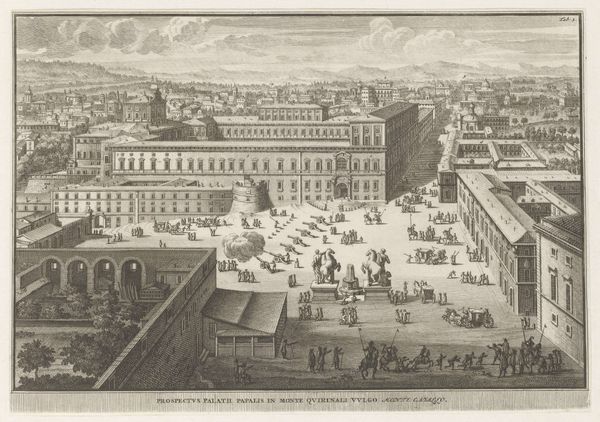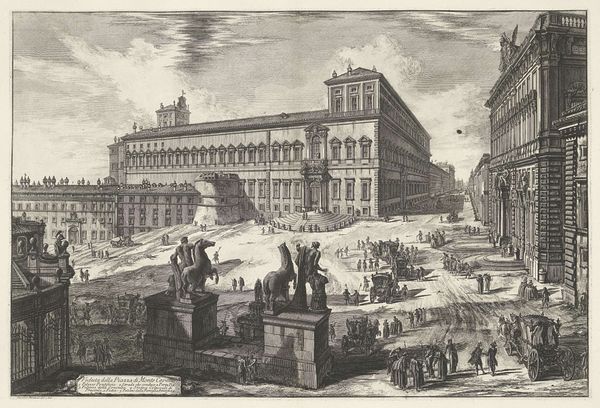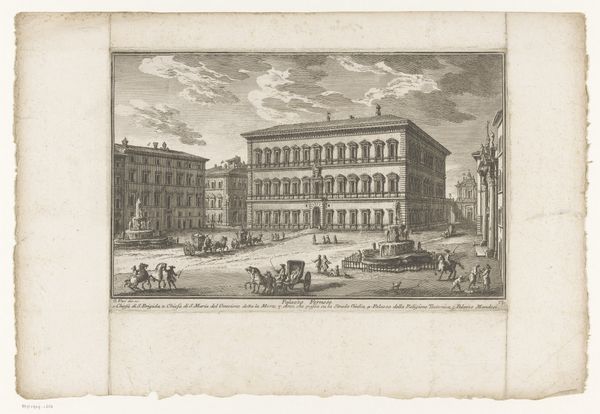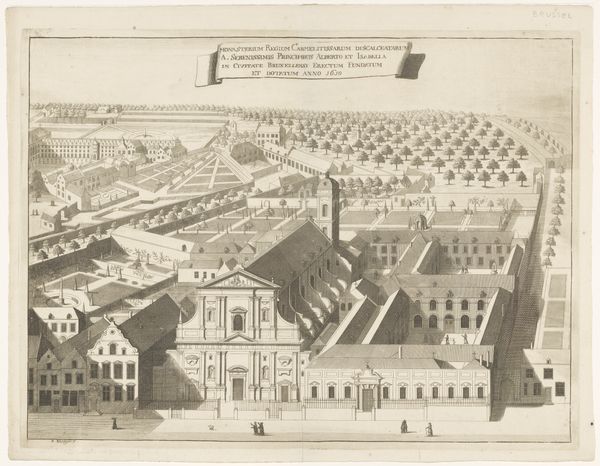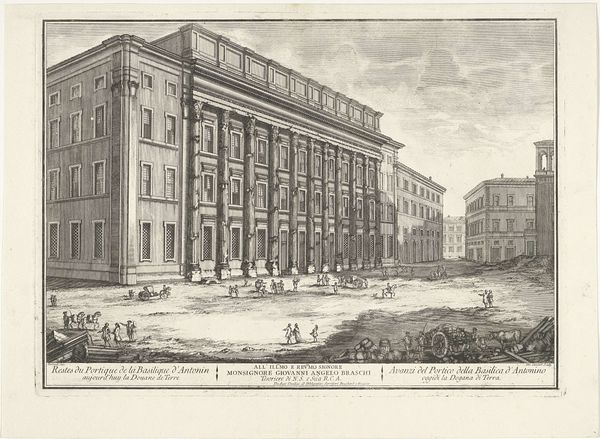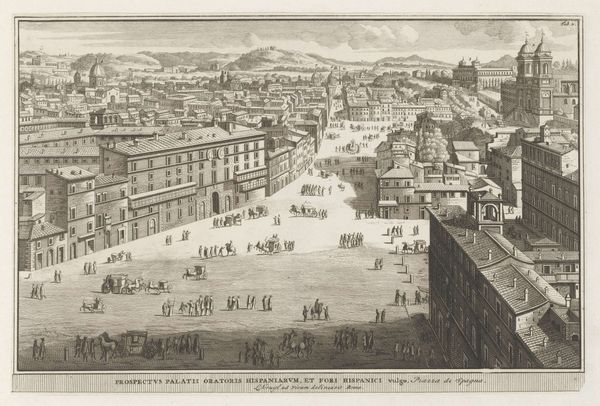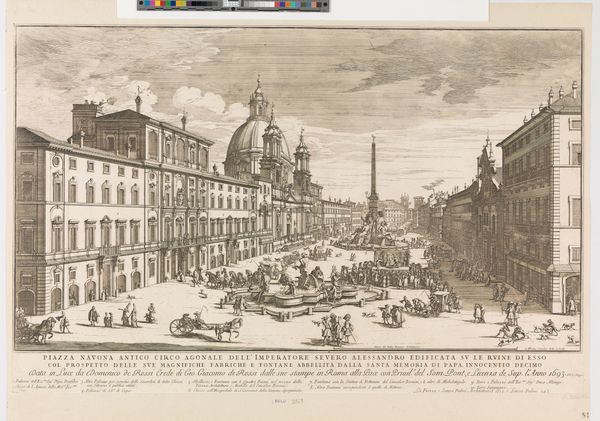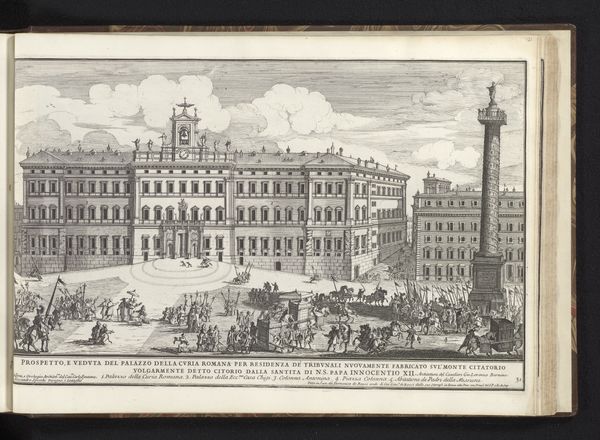
print, engraving, architecture
#
baroque
# print
#
old engraving style
#
cityscape
#
history-painting
#
italian-renaissance
#
engraving
#
architecture
Dimensions: height 225 mm, width 333 mm
Copyright: Rijks Museum: Open Domain
This engraving of the Palazzo Farnese in Rome was crafted by Jacobus Baptist in the late 17th century, a vision rendered in ink on paper. Notice how the building looms, a monument of architectural symmetry and humanist ideals. The fountains in the square recall ancient Roman practices, where water was both a symbol of life and a demonstration of power. This echoes through time; in ancient Greece, public fountains were not only functional but also social and artistic hubs. The facade's design, with its rhythmic placement of windows and classical motifs, is not merely aesthetic. It is a conscious echo of the Roman Empire’s grandeur, reflecting the Farnese family's ambition to align themselves with the historical weight of Roman emperors. These echoes tap into a deep collective memory, a yearning for order, structure, and the stability of a bygone era. This potent symbolism has been repeated and adapted throughout history, a visual embodiment of power that continues to resonate in modern architecture.
Comments
No comments
Be the first to comment and join the conversation on the ultimate creative platform.
